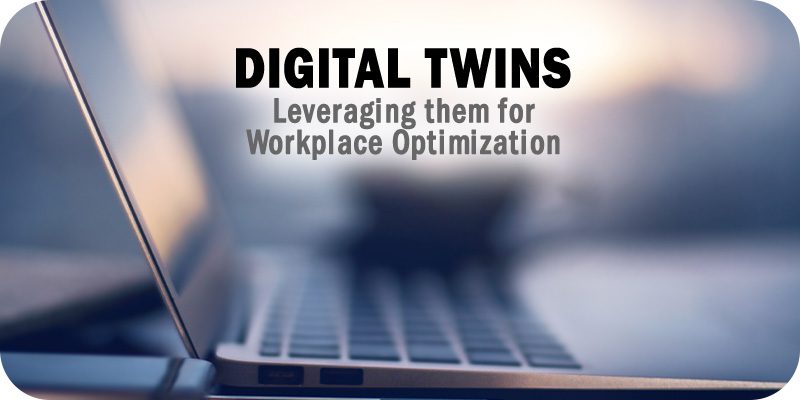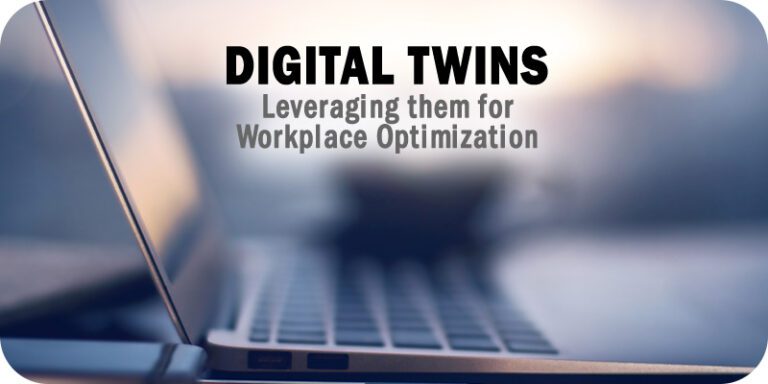Leveraging Digital Twins for Workplace Optimization


As part of Solutions Review’s Contributed Content Series—a collection of articles written by industry thought leaders in maturing software categories—Paul Phillips, the Chief Technology Officer at Eptura, outlines the value of using digital twins in workforce management and optimization efforts.
According to Gartner analysts, the digital twin technology market is projected to generate revenue of $183 billion by 2031. In a study conducted in 2019, the research firm discovered that 75 percent of companies implementing Internet of Things (IoT) projects had already adopted practical applications of digital twinning.
Emerging from digital modeling, digital twinning represents an innovative form of business intelligence that harnesses the power to integrate data from various systems. This capability provides a more comprehensive understanding of ongoing events and potential future scenarios.
As we continue to welcome employees back to the office in a post-pandemic era, it is more important now than ever to make the most out of the workplace and create a welcoming and productive environment for all—this is where digital twins come into play. From helping to optimize supply chains and boost workplace productivity and worker comfort to managing energy consumption and maintenance programs, the possibilities for leveraging digital twin technology to benefit the workplace are bountiful.
Three Ways Digital Twins are Changing Workplace Management
Research conducted by Verdantix highlights the growing interest in facilities optimization and predictive analytics, which has consequently increased the intent to invest in digital twins. A significant 31 percent of organizations have plans to invest in digital twins within the next 12 months. Moreover, 26 percent of organizations already utilize predictive analytics, while 20 percent employ it to a limited extent. These statistics indicate the increasing recognition of the value digital twins bring to workplace optimization efforts.
A workplace digital twin with operational management features is a fantastic opportunity to improve operations, boost employee satisfaction, and switch to fact-based decision-making. Three crucial sectors undergo radical change because of the use of digital twins:
1) Space and Asset Management
With the help of a digital twin, you can keep an eye on office occupancy to ensure it stays within your goals. If it is too low, you will be inefficient, and if it is too high, there will not be any room for error. Digital twins allow you to establish specific rules stating that particular floors cannot have an occupancy rate above a certain amount and generate a warning when the headcount nears your limit.
2) Move Management
When numerous departments are involved, paper seating charts are an antiquated and inefficient way to keep track of office changes. Instead of sharing hard-copy drawings and merging data among departments, planners can interact and provide real-time input with a digital counterpart of any workspace. Any floor’s precise count can be quickly retrieved, and with a few keystrokes, your other allocation options can be analyzed.
3) Lease Management
Without incorporating integrated data, assessing the capability of your portfolio to meet your future business requirements becomes incredibly challenging. When considering the choice between adding a new office or expanding an existing one, a standard lease agreement only provides information on the price per square footage, leaving out crucial details. However, by utilizing a digital twin, you can proactively manage your real estate expenses.
Benefits of Leveraging Digital Twin Technology in the Workplace
Using digital twins allows businesses to optimize their workspaces and assets to transform building operations for more efficient decision-making and cost savings. While integrated workplace management systems (IWMS) and computer-aided facility management (CAFM) programs primarily focus on spatial management, digital twins provide a broader perspective by incorporating the context of how employees utilize that space. With digital twins, 3D models now encompass complete workspaces, including floor plans, allowing for seamless alignment of assets and inventory within any building area.
However, the real significance of digital twin modeling lies in its practical implementation within specific contexts, utilizing comprehensive data sets from various industries and operational domains. By leveraging digital twins, companies can eliminate blind spots in planning and operations. This is achieved by facilitating seamless connectivity between asset and facilities data, thereby enabling users to easily explore, locate, interact with, and report on space and asset data that was previously challenging to access.
Digital twin modeling empowers organizations to overcome information gaps and gain valuable insights into their assets and spaces for improved decision-making and operational efficiency. Through comprehensive integration, digital twins offer companies several key benefits, including:
- Enabling the modeling of various “what if” scenarios and conditions across short, mid, and long-term periods.
- Facilitating the swift creation and automation of trend, threshold, and rule-based actions, streamlining operational processes.
- Accelerating the time to value by making data-informed decisions more quickly, leading to enhanced efficiency and productivity.
- Reducing asset costs through improved inventory pattern recognition, optimizing resource allocation, and minimizing wasteful practices.
- Extending the lifespan of assets by leveraging insights gained from digital twins, enabling proactive maintenance and mitigating potential issues.
- Decreasing energy usage by identifying areas for optimization, implementing energy-efficient practices, and promoting sustainability within the organization.
In conclusion, digital twin technology has become a powerful tool for managing the workplace through its various advantages. Digital twins give companies a unique look into the workplace and its assets, allowing them to improve operations, make informed decisions, and increase productivity. Digital twins are revolutionizing office administration across the board, from asset and space management to move and lease management. They make it possible to allocate resources effectively and use sustainable methods to proactively maintain internal systems, reducing costs and boosting productivity.




















